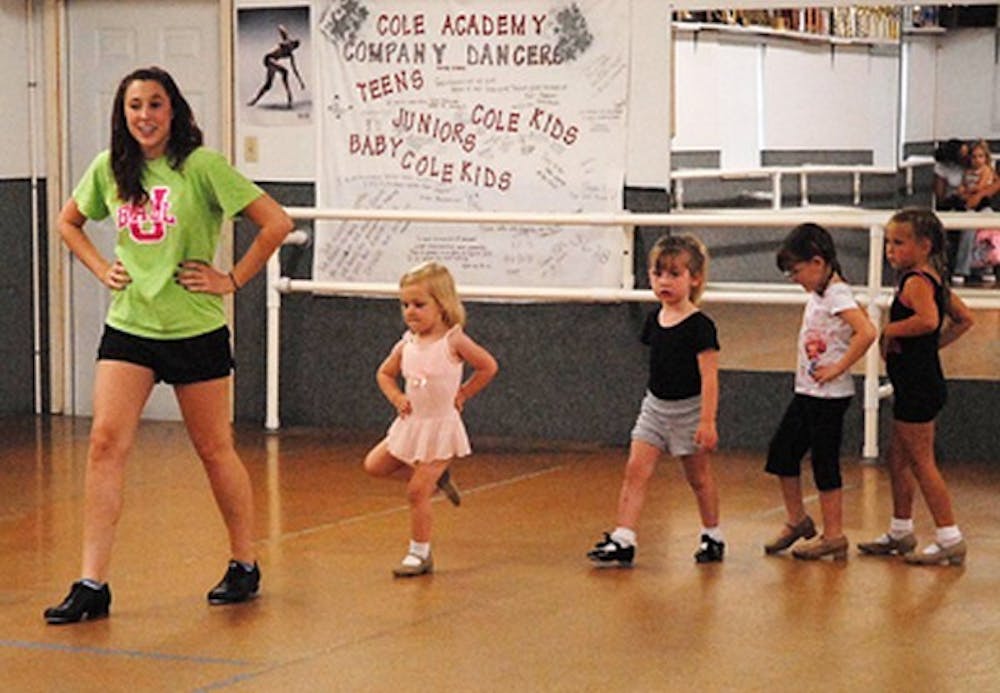Sophomore dance major Angela Benirschke placed her left foot in front of her right foot, allowing the piece of metal on the toe and heel of her tap shoe create a rhythmic pattern. The mirrored dance studio created an illusion of twin replicas dancing along with her, faithfully keeping up with her exact pattern. But it wasn't the set of look a likes Benirschke was concerned about, it was the group of seven 3 and 4-year-olds tilting their heads in her direction, trying to imitate her every move.
Benirschke's family has a history of dance with her mother being a dancer and owning a dance studio. Both of her two brothers have danced at some point in their lives, and as soon as Benirschke figured out how to walk, she began trying different types of dances her mom would be teaching to her youngest classes.
"My mom didn't allow kids under the age of 3 to take classes, but eventually she put me in a preschool class, which consisted of an hour of tap, ballet and tumbling," she said. "My mom was the teacher, of course."
When Benirschke was 8 years old, she became an assistant teacher for her mom and finally at 14 she began teaching classes on her own.
"I've been trained to be a teacher for a long time and I think the biggest difference between teaching and being taught is that you are the leader of the class," Benirschke said. "You need to be aware of what the kids are doing, keep them safe and be creative in the ways you present the lesson, especially with preschoolers."
While in Muncie for the summer, Benirschke has been a substitute teacher at various dance studios throughout the city.
"I'm only teaching about three hours a week this summer," she said. "But, I would really like to get back into teaching on a regular basis."
As a dance major, Benirschke spends about two or three hours a day in dance classes, in addition to her rehearsal schedule. Benirschke has danced in the Ball State shows "Works in Motion," "The Devil Made Me Dance," "Dance Revelations" and the "Junior Choreography Showcase."
"The benefits of being in productions at school are that you are exposed to what it may be like to dance professionally," Benirschke said. "I've had a chance to work with almost all of my teachers outside of the studio, which allows the student to get to know them on a more personal level, and I've been exposed to types of dance that have been challenging and completely new to me."
While Benirschke loves the dancer's lifestyle, she admits that it can be challenging on her body.
"Dancing is not only hard on the body, but hard on the mind," Benirschke said.
Professor of Dance Gregory Lund said the department encourages students to continue their studies during the summer to keep their bodies in shape for the upcoming semester.
"Many take classes in their home region, others work as dancers at theme parks around the country or participate in civic theatres," Lund said. "There are numerous dance camps and summer intensive programs all across the country. Many dance companies also provide training during the summer,"
Despite the occasional aches and pains regular dancing can cause, Benirschke said she can't imagine pursuing any other dream.
"It stimulates your mind in a completely different way than anything else I've experienced," she said, "That makes it worth all the pain and stress it can cause."
Upcoming recitalCole Academy of DanceJuly 18 6:00 PMEmens AuditoriumTickets: $12



